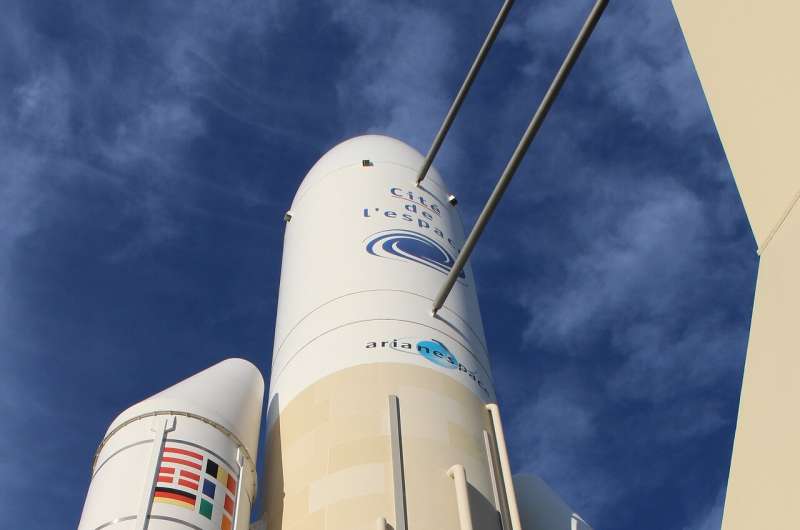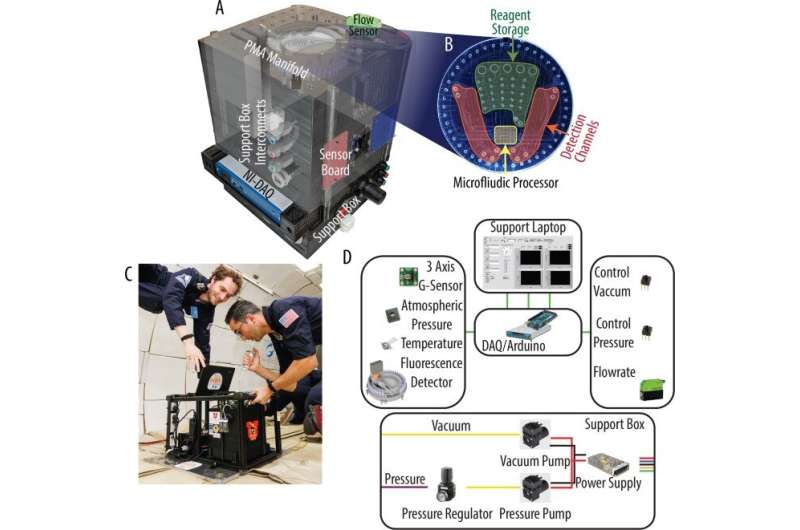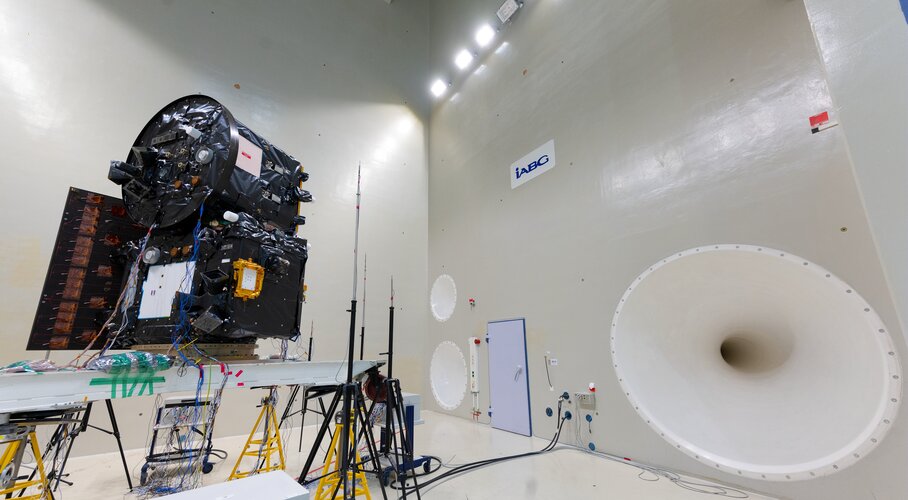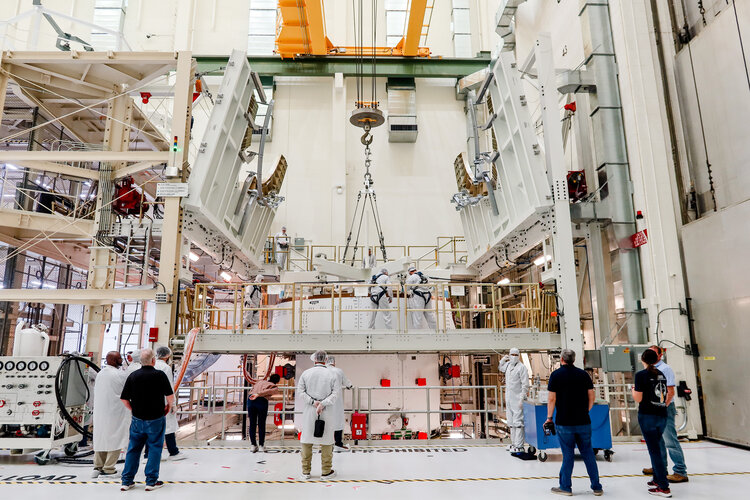China conducts extravehicular radiation biological exposure experiment on space station
Friday, 16 June 2023 08:01 China has performed a radiation biological exposure experiment outside the country's Mengtian lab module for the first time, a milestone achievement in radiation biology and space science research, according to a report by Science and Technology Daily.
The experiment equipment was jointly developed by the National Space Science Center under the Chinese Academy of Sciences and the Dalian Ma
China has performed a radiation biological exposure experiment outside the country's Mengtian lab module for the first time, a milestone achievement in radiation biology and space science research, according to a report by Science and Technology Daily.
The experiment equipment was jointly developed by the National Space Science Center under the Chinese Academy of Sciences and the Dalian Ma Earth from Space: Eastern Mediterranean
Friday, 16 June 2023 07:00 Image:
Copernicus Sentinel-3’s wide view captures the eastern edge of the Mediterranean and surrounding countries.
Image:
Copernicus Sentinel-3’s wide view captures the eastern edge of the Mediterranean and surrounding countries. Final launch of Europe's Ariane 5 rocket postponed
Friday, 16 June 2023 06:18
The final launch of Europe's Ariane 5 rocket has been postponed due to a technical problem, French firm Arianespace said on Thursday, in the latest blow to European space efforts.
After 27 years of launches, the Ariane 5's 117th and last mission had been scheduled to blast off between 2126-1001 GMT on Friday from Europe's spaceport in Kourou, French Guiana.
But "it has come to light that there is a risk to the redundancy of a critical function on the Ariane 5," tweeted Arianespace, which operates the rocket.
"Consistent with safety requirements, Arianespace has decided to postpone the roll-out of the #VA261 launch vehicle," it added.
"Analyses are underway to determine a new launch date."
The rocket and its payload of one French and one German communication satellite "are in the final assembly building in stable and safe conditions," Arianespace added.
The postponement comes as Europe struggles to find a way to independently blast heavy-load missions into space due to repeated delays for the next-generation Ariane 6—and Russia withdrawing its Soyuz rockets because of sanctions over its war in Ukraine.
Virgin Galactic to send Italian researchers to space, then regular commercial flights
Friday, 16 June 2023 06:12
Technical problem postpones final Ariane 5 launch
Thursday, 15 June 2023 22:35
Arianespace has postponed the final launch of the Ariane 5, potentially for several weeks, after discovering a potential problem with pyrotechnical systems on the rocket.
Eutelsat reversing course with European retail broadband business sale
Thursday, 15 June 2023 21:05
Eutelsat told the Paris stock exchange June 15 it is selling its European retail broadband activities to “an experienced private operator” to return focus to wholesale services.
Virgin Galactic sets late June date for first commercial SpaceShipTwo flight
Thursday, 15 June 2023 19:10
Virgin Galactic announced June 15 that it plans to conduct the first commercial flight of its SpaceShipTwo suborbital vehicle in late June on a mission for the Italian Air Force.
Project Kuiper urges regulators to focus on satellite maneuverability rules
Thursday, 15 June 2023 15:45
Governments should consider requiring satellites over a certain altitude to be maneuverable to improve space sustainability, according to an executive for Amazon’s proposed Project Kuiper constellation.
Microfluidics in space to detect extraterrestrial life signatures and monitor astronaut health
Thursday, 15 June 2023 14:30
Former Spaceflight CEO joins law firm to support commercial space clients
Thursday, 15 June 2023 13:59
The former chief executive of Spaceflight has joined a major law firm to lead its efforts in supporting the commercial space industry.
Luxembourg approves program to give NATO O3b mPower access
Thursday, 15 June 2023 13:14
SES said June 15 that Luxembourg has approved a program to carve out capacity from its O3b mPower medium Earth orbit broadband network for the country and NATO allies.
Carbon monoxide from fires in Canada
Thursday, 15 June 2023 11:37 Image:
As climate change increases the risk of wildfires across the globe, the spate of fires that hit Canada in May and June suggest that 2023 is on course to be the country’s worst fire season to date. These fires not only
Image:
As climate change increases the risk of wildfires across the globe, the spate of fires that hit Canada in May and June suggest that 2023 is on course to be the country’s worst fire season to date. These fires not only Sun-watching Proba-3 formation flyers tested for take-off
Thursday, 15 June 2023 11:12
ESA’s pair of Sun-watching Proba-3 satellites have been placed in take-off configuration, one on top of the other, for testing in simulated launch and space conditions at IABG in Germany, ahead of their planned lift-off next year.
Winners unravel Euclid #CosmicMystery with creative inspiration
Thursday, 15 June 2023 11:00
Over 90 participants were up for the challenge to visualise just how much we know and don’t know in the Universe and explain the #CosmicMystery that ESA’s Euclid mission will soon begin to investigate. From songs, crochets and animations to apparel, paintings and baked goods, the creativity of participants amazed the judges.


